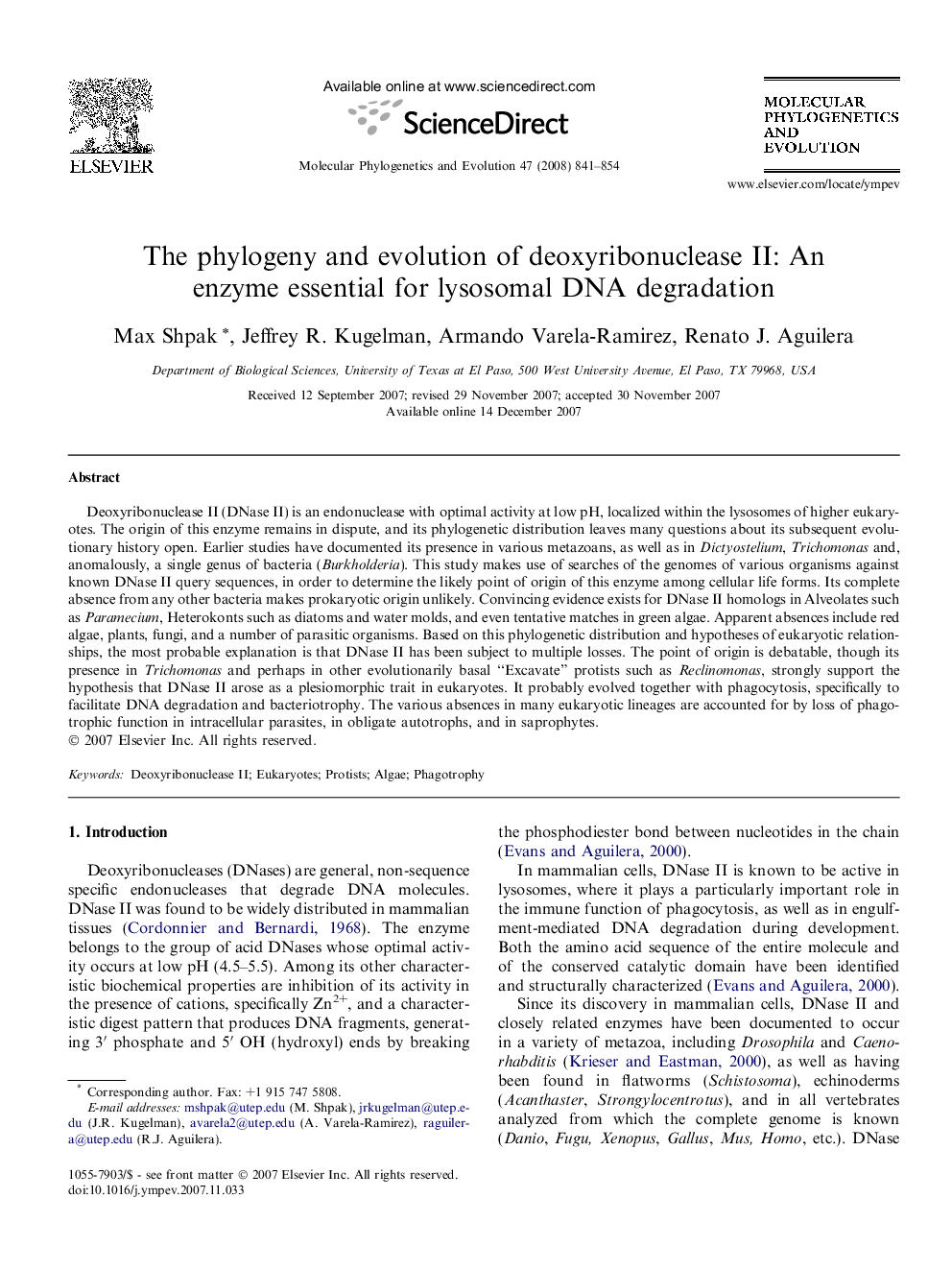| کد مقاله | کد نشریه | سال انتشار | مقاله انگلیسی | نسخه تمام متن |
|---|---|---|---|---|
| 2835379 | 1164340 | 2008 | 14 صفحه PDF | دانلود رایگان |

Deoxyribonuclease II (DNase II) is an endonuclease with optimal activity at low pH, localized within the lysosomes of higher eukaryotes. The origin of this enzyme remains in dispute, and its phylogenetic distribution leaves many questions about its subsequent evolutionary history open. Earlier studies have documented its presence in various metazoans, as well as in Dictyostelium, Trichomonas and, anomalously, a single genus of bacteria (Burkholderia). This study makes use of searches of the genomes of various organisms against known DNase II query sequences, in order to determine the likely point of origin of this enzyme among cellular life forms. Its complete absence from any other bacteria makes prokaryotic origin unlikely. Convincing evidence exists for DNase II homologs in Alveolates such as Paramecium, Heterokonts such as diatoms and water molds, and even tentative matches in green algae. Apparent absences include red algae, plants, fungi, and a number of parasitic organisms. Based on this phylogenetic distribution and hypotheses of eukaryotic relationships, the most probable explanation is that DNase II has been subject to multiple losses. The point of origin is debatable, though its presence in Trichomonas and perhaps in other evolutionarily basal “Excavate” protists such as Reclinomonas, strongly support the hypothesis that DNase II arose as a plesiomorphic trait in eukaryotes. It probably evolved together with phagocytosis, specifically to facilitate DNA degradation and bacteriotrophy. The various absences in many eukaryotic lineages are accounted for by loss of phagotrophic function in intracellular parasites, in obligate autotrophs, and in saprophytes.
Journal: Molecular Phylogenetics and Evolution - Volume 47, Issue 2, May 2008, Pages 841–854